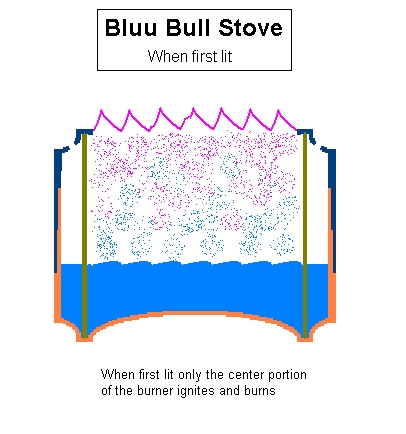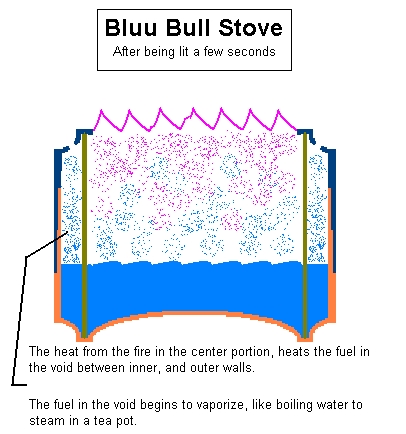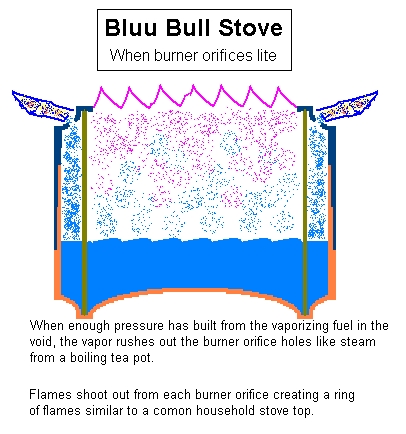

This page is here for those of you, like me, who like to know how something works.
The first portion describes how the burner works.
Scroll down toward the bottom for the section explaining how the pieces work together.
The drawing below illustrates the BluuBull Stove, filled with fuel.
The various parts are shown in different colors to assist in understanding how the stove is constructed.
Fuel is poured into the center of the stove. The fuel then seeps under the inner wall and fills the void between the inner and outer walls.

The fuel in the center is ignited with a lighter or match. Only the center portion of the stove will have flame at first.
The flame created from burning denatured alcohol can be extremely difficult to see in daylight, so be careful when lighting the stove. There may be flames you cannot see. If your hand is held over the stove too long, you may get burned.

As the flame in the center heats the whole stove, the fuel will be heated as well. As the fuel in the void between the inner and out walls heats up it begins to boil and give off a flammable vapor. As more heat is generated the vapor will begin to build pressure in the void and will be pushed out of the burner orifices. This is similar to steam escaping from a boiling tea pot.

The flame from the center of the stove will ignite the escaping vapor. This may happen any where from 10 seconds to 50 seconds depending on the ambient temperature, fuel temperature, fuel level, or altitude. Once the vapor escaping from the burner orifices is ignited there will be a ring of fire created similar to a common household stove burner. The stove will remain lit until the fuel is exhausted or the stove is extinguished in some way.

The drawing below illustrates the BluuBull Stove set up to cook. The rising heat pulls air in from below the wind screen, which is about ¼” above the supporting surface. The air pulled in supplies oxygen to the burner allowing it to burn hotter. The heat rises to the pan and moves to the sides to escape. The wind screen extends above the bottom of the pan to improve efficiency. The heat is forced to stay along the pan until the top of the wind screen is reached.




















